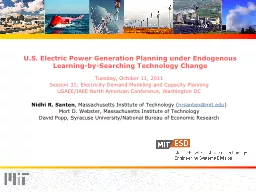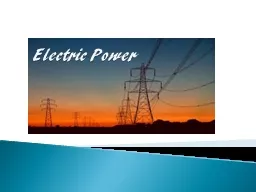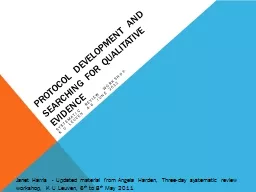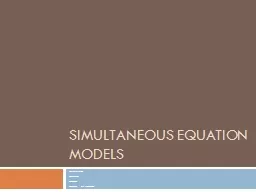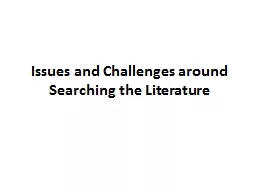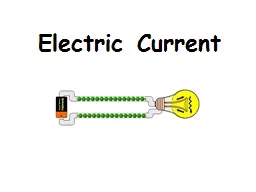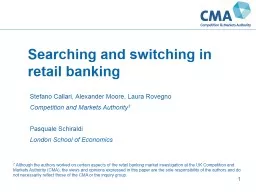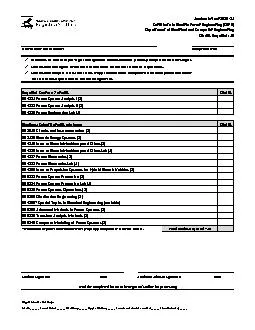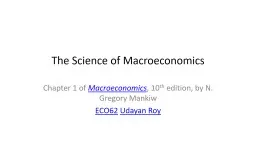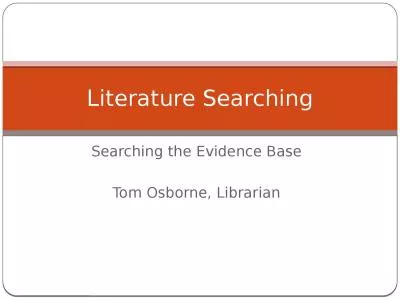PPT-U.S. Electric Power Generation Planning under Endogenous Learning-by-Searching Technology
Author : faustina-dinatale | Published Date : 2019-06-22
Tuesday October 11 2011 Session 31 Electricity Demand Modeling and Capacity Planning USAEEIAEE North American Conference Washington DC Nidhi R Santen Massachusetts
Presentation Embed Code
Download Presentation
Download Presentation The PPT/PDF document "U.S. Electric Power Generation Planning ..." is the property of its rightful owner. Permission is granted to download and print the materials on this website for personal, non-commercial use only, and to display it on your personal computer provided you do not modify the materials and that you retain all copyright notices contained in the materials. By downloading content from our website, you accept the terms of this agreement.
U.S. Electric Power Generation Planning under Endogenous Learning-by-Searching Technology: Transcript
Download Rules Of Document
"U.S. Electric Power Generation Planning under Endogenous Learning-by-Searching Technology"The content belongs to its owner. You may download and print it for personal use, without modification, and keep all copyright notices. By downloading, you agree to these terms.
Related Documents

